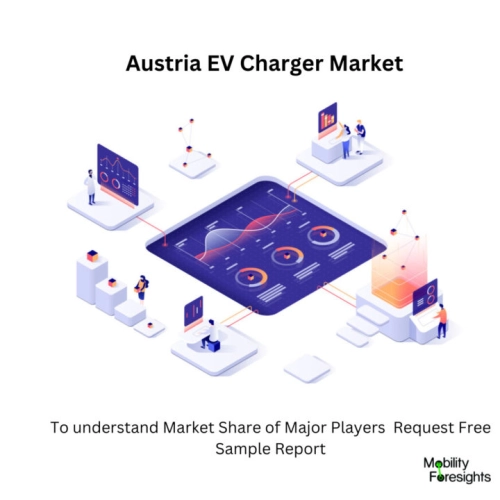
- Get in Touch with Us

Last Updated: Apr 25, 2025 | Study Period: 2022-2030
Electric cars, communal EVs, and plug-in hybrids can all recharge at an electric vehicle (EV) charging station, which is a piece of machinery that connects an EV to an electrical source.
Just like any other appliance or item you charge by putting into the wall, an EV charger draws an electrical current from either a 240v outlet or the grid it is hardwired to and distributes that electricity to the car.
A plug-in electric vehicle (PEV) charging station, also known as a charge point or electric vehicle supply equipment (EVSE), is an item of machinery that supplies electricity for charging PEVs.

The Austria EV Charger Market accounted for $XX Billion in 2021 and is anticipated to reach $XX Billion by 2030, registering a CAGR of XX% from 2022 to 2030.
New EV Charging Standard Proposed by Austrian Start-up.A startup in Austria Easelink has created a technique that enables automatic charging of electric vehicles in drive-ins, underground garages, and other locations using pads anchored to the ground. Future EV charging regulations are being proposed by Easelink to use its "Matric Charging" technology.
Electric cars can also be charging whenever they are at a stop. Easelink claims that the conventional charging methods now in use do not support this.
The widespread adoption of electromobility is hampered by difficult cable connections. Charging electric automobiles is annoying and tedious due to dealing with non-standard connectors, filthy cable bundles, and pricey charging columns.
Due to this, Easelink has rethought how electric vehicle charging will go. There will be no need for cables or charging columns. Automated charging will occur without the user even realising it, essentially converting time spent parked into time spent charging.
| Sl no | Topic |
| 1 | Market Segmentation |
| 2 | Scope of the report |
| 3 | Abbreviations |
| 4 | Research Methodology |
| 5 | Executive Summary |
| 6 | Introduction |
| 7 | Insights from Industry stakeholders |
| 8 | Cost breakdown of Product by sub-components and average profit margin |
| 9 | Disruptive innovation in the Industry |
| 10 | Technology trends in the Industry |
| 11 | Consumer trends in the industry |
| 12 | Recent Production Milestones |
| 13 | Component Manufacturing in US, EU and China |
| 14 | COVID-19 impact on overall market |
| 15 | COVID-19 impact on Production of components |
| 16 | COVID-19 impact on Point of sale |
| 17 | Market Segmentation, Dynamics and Forecast by Geography, 2022-2030 |
| 18 | Market Segmentation, Dynamics and Forecast by Product Type, 2022-2030 |
| 19 | Market Segmentation, Dynamics and Forecast by Application, 2022-2030 |
| 20 | Market Segmentation, Dynamics and Forecast by End use, 2022-2030 |
| 21 | Product installation rate by OEM, 2022 |
| 22 | Incline/Decline in Average B-2-B selling price in past 5 years |
| 23 | Competition from substitute products |
| 24 | Gross margin and average profitability of suppliers |
| 25 | New product development in past 12 months |
| 26 | M&A in past 12 months |
| 27 | Growth strategy of leading players |
| 28 | Market share of vendors, 2022 |
| 29 | Company Profiles |
| 30 | Unmet needs and opportunity for new suppliers |
| 31 | Conclusion |
| 32 | Appendix |